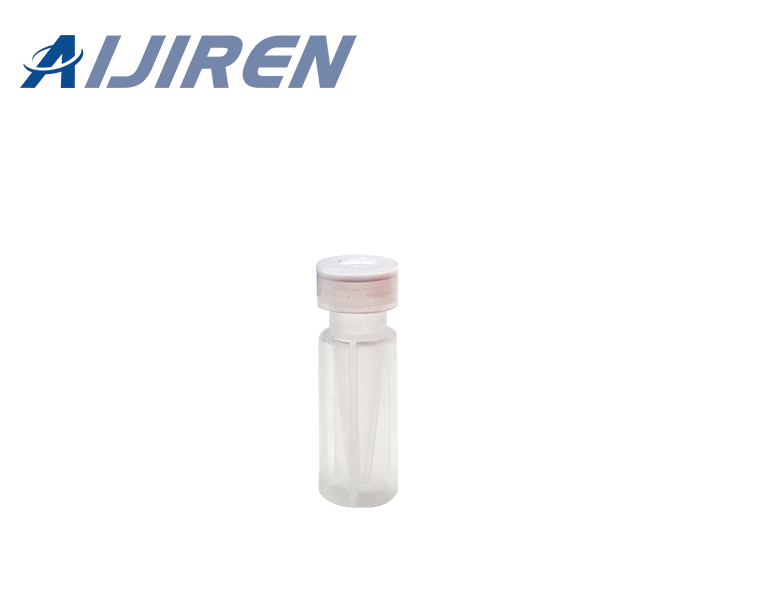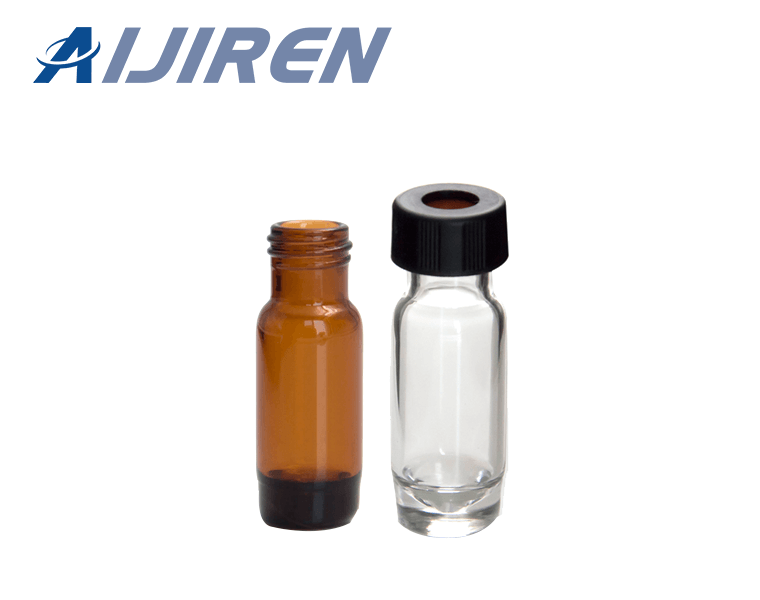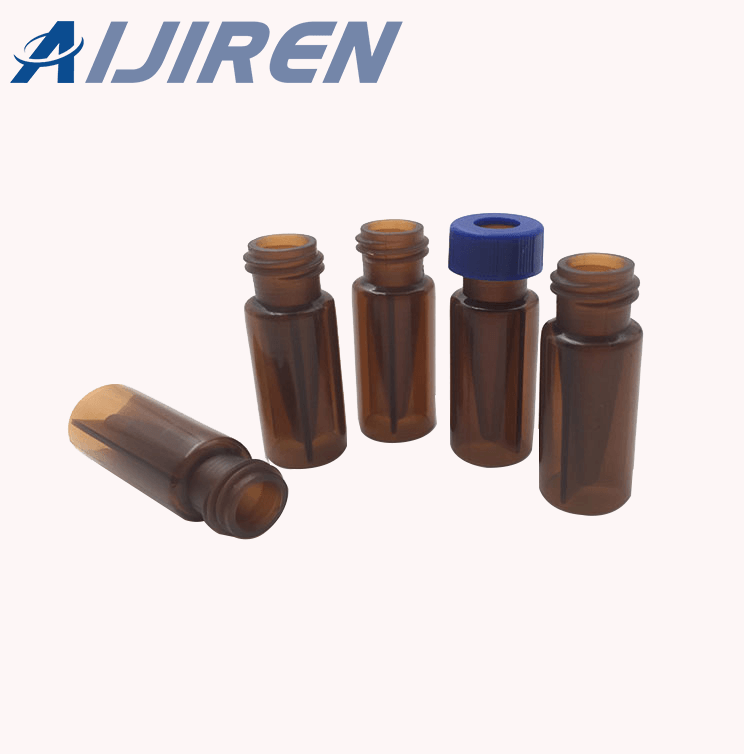Boosting HPLC Performance with High-Quality Recovery Vials with Aijiren: A Global Wholesaler
In the field of chromatography, High-Performance Liquid Chromatography (HPLC) is an industry-standard method for the separation, identification, and quantification of chemical compounds present in samples. Sample preparation for HPLC analysis requires high-quality vials to maintain accuracy in analysis; HPLC recovery vials play an integral part in this process by providing safe storage space and retrieval methods for samples.
In this article, we will take an in-depth look at HPLC recovery vials and provide a thorough explanation of their definition, types, use cases, and pricing structures.
I. What are HPLC Recovery Vials
High-recovery vials are specifically designed to optimize sample recovery when sample volumes are low or complex matrices may result in loss of analytes. In this article, we will examine what high-recovery vials are, their differences from standard vials, as well as benefits associated with them.
1. Define HPLC Recovery Vials and Their Purpose in Chromatography
High-recovery vials are special containers used in chromatography to collect and store samples for analysis. Constructed of inert materials such as borosilicate glass or polypropylene, they come in various sizes to fit user needs. What sets high recovery vials apart from standard vials is their distinctive design: featuring conical interior bottom and tapered opening which facilitate efficient and complete recovery even for small samples.
2. Two Advantages of Using HPLC Recovery Vials
One of the primary advantages of high-recovery vials is their ability to ensure maximum analyte recovery from samples, especially when working with complex samples that contain low concentrations or matrix effects that reduce recovery rates. Traditional vials may trap analytes in corners or crevices of their vial, leading to slower recovery rates; high recovery vials eliminate this issue by making samples easily accessible and recoverable.
High recovery vials offer another advantage by being compatible with various forms of chromatography techniques, including gas chromatography, liquid chromatography, and mass spectrometry. Furthermore, they can also be used for solid-phase extraction and liquid-liquid extraction methods of sample preparation.
High-recovery vials are designed not only to ensure high recovery capabilities but also to minimize contamination risks. Produced in sterile environments and sealed with airtight caps to keep out outside sources, they ensure accurate and reliable analytical results from samples analyzed within them.
High-recovery vials are indispensable tools in the field of chromatography, particularly for those working with low volumes or complex samples. Their unique design and compatibility with various techniques make them invaluable resources in analytical laboratories, helping maximize sample recovery while mitigating contamination risk for accurate, reliable analytical results.
II. Four Types of HPLC Recovery Vials


In HPLC, the selection of recovery vials can have a profound impact on the accuracy and reliability of analytical results obtained. Given the variety of high-recovery vials on the market, selecting an optimal one for an application may prove challenging; we will explore all types of high-recovery vials available along with their features, benefits, and suggested applications in this article.
1. Glass Vials
Glass vials are one of the most frequently used high-recovery vials in HPLC. Constructed of borosilicate glass, which resists chemical corrosion and thermal shock, these vials come in various sizes, shapes, and closure options making them suitable for various uses. Compatible with most solvents they can even be used for solid-phase extraction and liquid-liquid extraction procedures.
2. Plastic Vials
Plastic vials have become an increasingly popular choice for HPLC experiments due to their lightweight, shatterproof nature, and low cost. Made from materials such as polypropylene, polycarbonate, or cyclic olefin copolymer (COC), plastic vials come in various sizes and are compatible with an assortment of solvents that make them suitable for many different applications. They may not be appropriate however for aggressive solvents or high-temperature use.
3. Amber Vials
Amber vials are specially designed to protect light-sensitive samples from photodegradation, made of amber glass that filters out ultraviolet and blue light rays. Compatible with numerous solvents and sample preparation techniques, amber vials are especially beneficial when working with samples containing light-sensitive analytes like vitamins, carotenoids, or medications.
4. Screw Top Vials
Screw top vials feature threaded closures to provide quick and secure seals of their contents, suitable for various applications including volatile or highly reactive analytes requiring tight seals that prevent loss or contamination of samples. Available both in glass and plastic materials. Screw-top vials may be particularly helpful when dealing with volatile materials as their tight seal can prevent sample loss or contamination risk.
In conclusion, selecting a high recovery vial can have a dramatic impact on the accuracy and reliability of HPLC analytical results. Each type of vial available on the market offers unique features and benefits suitable for certain applications; common examples are glass and plastic vials while low-volume amber and screw-top versions may offer extra advantages in certain circumstances. It is wise to select the most appropriate vial based on factors such as sample volume, solvent compatibility requirements, and analytical needs when choosing one of these vials.
What High Recovery Vials Are Designed for?
These vials are specifically designed to minimize dead volume in their containers and maximize sample volume, which makes them particularly helpful when working with limited sample volumes and decreasing loss. Glass and plastic materials offer low-volume vials with different capacities to meet individual user requirements.
III. When to Use High Recovery Vials
The High Recovery Vials should be used in the following situations. In High-Performance Liquid Chromatography (HPLC), selecting an optimal recovery vial can have an enormously consequential effect on the accuracy and reliability of analytical results obtained. High-recovery vials are designed to minimize sample loss while simultaneously optimizing analyte recovery, making them indispensable in certain circumstances. In this article we’ll outline when high recovery vials may be useful and what their benefits could be; additionally, we will outline any potential negative repercussions from not using them when applicable.
1. Three Scenarios Where High Recovery Vials are Necessary for HPLC Analysis
1). Low-concentration Samples
When working with low-concentration samples, it is crucial to maximizing analyte recovery to increase analysis sensitivity and ensure accurate results. High recovery vials have been designed specifically to minimize sample loss to recover maximum amounts of analytes from each sample; using standard vials could cause lower sensitivity or inaccurate results.
2). Samples With Limited Volume
It is crucial that when working with limited sample volumes, sample loss should be kept to a minimum and recovery maximized. Utilizing high recovery vials with low dead volumes is an effective way of limiting sample loss during analysis, and improving accuracy and reliability; using standard vials could result in sample loss and inaccurate results.
3). Samples With Complex Matrixes
When handling samples that contain complex matrices, it is crucial to minimize interactions between the sample and vial to achieve accurate results. Utilizing high recovery vials with low surface areas may reduce interactions between sample and vial, thus decreasing the risk of sample loss or degradation; conversely, using traditional vials in this situation could result in interactions between sample and vial, leading to inaccurate results.
2. The Potential Consequences of NOT Using High Recovery Vials in Certain Situations
At times, not using high-recovery vials may have serious repercussions. For instance, using standard vials with samples having low concentration can result in reduced sensitivity and inaccurate results that lead to missed product development opportunities or incorrect diagnoses in clinical settings. Furthermore, using standard vials with limited sample volumes could lead to sample loss and inaccurate results, leading to unreliable data and wasted resources.
In summary, high-recovery vials are indispensable when conducting HPLC analysis on low-concentration samples with limited sample volumes and complex matrices, to maximize analyte recovery while reducing sample loss and improving analytical results. Not using such vials in such situations could have serious repercussions, including inaccurate results and missed opportunities for product development or clinical diagnoses. Choosing an appropriate high-recovery vial based on your specific analytical requirements and sample characteristics should always be considered when selecting one of these vials.
IV. What is the Price of HPLC Recovery Vials
In High-Performance Liquid Chromatography (HPLC), recovery vials are essential for producing accurate and precise results. They’re designed to minimize sample loss during extraction processes, leading to maximum recovery rates; however, their costs can often outstrip those of standard vials; in this article, we explore why that’s so and discuss ways of balancing cost with quality when choosing high recovery vials.
1. Factors That Contribute to the Price Difference
1). Manufacturing costs are the main contributors to the higher cost of high recovery vials. These vials use advanced technologies and superior-grade materials, making them more expensive than standard vials. High recovery vials often feature unique coatings to minimize sample adsorption onto vial walls and reduce sample loss; additionally, they often boast greater precision dimensional tolerance allowing better sealing capabilities with reduced contamination risks.
2). Another factor contributing to the cost of high recovery vials is their additional testing process, as these vials must meet stringent quality control standards to meet specifications. Testing adds extra expense when manufacturing them; ultimately leading to higher prices for end users.
Though higher recovery vials are more expensive than their alternatives, they still present many advantages over time and resources. Their use can significantly enhance HPLC results’ accuracy and precision while simultaneously decreasing repeat analysis time and resources saved through these vials.
2. The Importance of Balancing Cost and Quality When Choosing High-recovery Vials
When selecting high-recovery vials, it’s essential to strike a balance between cost and quality. Labs should choose vials that meet all specifications while remaining within their budget; additionally, they must consider the frequency of use, and significance of the sample being analyzed, as well as an overall cost-benefit ratio when choosing vials.
High recovery vials are an indispensable tool for producing accurate and precise HPLC results, at an economical price point. While their costs may be greater than standard vials, their advantages make them worth their weight in gold – laboratories should carefully consider both price and quality when choosing high recovery vials to ensure they get maximum return for their investment.
V. Benefits of Using HPLC Recovery Vials
High-Performance Liquid Chromatography (HPLC) is an analytical chemistry technique that is commonly employed to separate, identify and quantify compounds found in mixtures. The accuracy, precision, and reproducibility of HPLC results depend upon several factors, including the quality of equipment and materials used. A key element of HPLC systems is recovery vials; we will discuss both their benefits as well as any possible repercussions if not used appropriately in this article.
HPLC recovery vials are specifically designed to minimize sample loss during extraction processes, thus increasing the recovery of samples. Their use can significantly enhance the accuracy, precision, and reproducibility of HPLC results by limiting sample loss during extraction as they minimize adsorption onto vial walls and therefore risk of sample loss; this ensures the sample analyzed remains representative of its original form for more reliable and accurate results.
HPLC recovery vials offer several other advantages over alternative samples. Their precise dimensions enable better sealing and decrease contamination risks; this feature is especially important when working with samples that are vulnerable to contamination such as low-concentration samples. Furthermore, using recovery vials reduces repeat analyses thus saving both time and resources.
HPLC recovery vials can have serious repercussions in certain instances. For example, when analyzing trace levels of contaminants in environmental samples, even minor sample losses can have profoundly detrimental effects on the accuracy and precision of results. Furthermore, pharmaceutical applications require precise concentration measurement of drugs that pose no safety risk to their patients; deviations could have serious ramifications that compromise patient well-being.
HPLC recovery vials are integral in producing accurate and precise chromatographic results, providing various advantages such as reduced sample loss, contamination reduction, and improved reproducibility. Failing to use recovery vials could have devastating repercussions in sensitive applications – laboratories should take great care in selecting high-quality equipment and materials when conducting HPLC analyses to achieve reliable and precise results.
VI. Applications of HPLC Recovery Vials
High-Performance Liquid Chromatography (HPLC) is an integral component of analytical chemistry, and its results depend on the quality of equipment and materials used. One critical component is a recovery vial designed specifically to minimize sample loss during extraction processes. We will discuss in this article when this type of vial should be utilized and discuss specific cases where recovery vials may be essential – in other words, selecting an ideal vial is key!
HPLC recovery vials are widely utilized across a wide variety of fields, such as environmental analysis, pharmaceutical analysis, food and beverage analysis, and more. With each application requiring accurate results for accuracy and precision to be of paramount importance; using recovery vials can drastically enhance data reliability.
Recovery vials may be essential in certain situations for accurate results, such as when analyzing trace levels of contaminants in environmental samples; any sample loss could dramatically change their accuracy and precision, impacting patient safety in serious ways. They’re also helpful when working with small sample volumes that are susceptible to contamination.
Selecting an HPLC recovery vial that suits each application is of vital importance. Vials come equipped with various features and capabilities, and choosing an inappropriate vial could lead to inaccurate or unreliable results. Laboratories must take into account factors like the composition of the sample being analyzed, the concentration of the analyte of interest, and sample complexity when choosing their optimal recovery vial.
In conclusion, HPLC recovery vials are essential in providing accurate and reliable results in various applications. In particular, they’re indispensable when working with samples that are sensitive to contamination such as trace levels of contaminants. When choosing the ideal recovery vial for each sample being analyzed it’s vital that laboratories carefully consider their equipment quality to guarantee reliable and accurate analysis results.
VII. How to Choose the Right HPLC Recovery Vial


High-Performance Liquid Chromatography (HPLC) is an analytical technique that requires high-grade equipment and materials to yield reliable results. One key component of an HPLC system is the recovery vial, which plays an integral role in minimizing sample loss while simultaneously improving the accuracy of results obtained. We will discuss what factors should be taken into consideration when selecting an HPLC recovery vial as well as stress its importance when balancing cost with quality. In this article, we will highlight these considerations further.
Four Factors to Consider When Selecting the Right HPLC Recovery Vial
- Compatibility should always be kept in mind when choosing an HPLC recovery vial, as it must fit with both the sample being analyzed and the chromatography system being utilized. When selecting an appropriate vial for HPLC analysis, consider factors like solvent compatibility, pH range, and temperature range to ensure it does not react with samples or cause contamination.
2. Size of the Vial Is also important vial should be the appropriate size for its intended sample volume, providing adequate headspace to enable mixing and diluting. A vial that is too large may increase surface area leading to sample loss or absorption while too small can result in the insufficient sample for analysis, leading to incomplete or inaccurate results.
3. Material selection for recovery vials is also of great significance, and commonly used materials include glass, polypropylene, and polyethylene. Glass vials are best used when samples are vulnerable to leaching or for long-term storage; polypropylene and polyethylene vials offer greater risk protection or are transport-friendly options.
4. When selecting HPLC recovery vials, it is crucial to strike a balance between cost and quality. While higher quality vials may cost more, they offer superior performance and reliability for accurate, reproducible results; lower quality vials may cost less but could result in sample loss or contamination leading to unreliable results.
Selecting an HPLC recovery vial that meets all your requirements is key for obtaining accurate and reliable chromatography results. Considerations including compatibility, size, and material should all play an integral part when making this selection decision. It is also crucial that costs and quality balance, with higher-grade vials often costing more but offering improved performance and reliability – thus laboratories must carefully consider their budget when choosing their recovery vials to achieve accurate and reliable results in their chromatography studies.
VIII. Conclusion
High-performance liquid chromatography (HPLC) is an invaluable analytical technique used by various industries, such as pharmaceuticals, food and beverage, and environmental monitoring. It works by isolating components based on physical and chemical properties; selecting suitable vials for HPLC analysis is paramount to obtaining accurate and reliable results; this article explores what factors must be taken into consideration when choosing high-recovery vials for HPLC analysis.
First and foremost is to consider the material of the vials used. They should be inert and nonreactive with either samples or mobile phases; glass vials are commonly preferred due to their transparency and inertness; plastic vials may also work for certain applications.
The second aspect to keep in mind when designing a vial is its design. A suitable vial should feature consistent internal volume and flat bottom for reproducible results as well as a tight seal to protect from evaporation and contamination.
The third factor to take into account when analyzing low-concentration samples or expensive or rare ones is vial surface treatment. Certain vials have been specially coated to increase hydrophobicity and minimize sample loss through adhesion on their surface. This feature can be particularly important when dealing with samples with lower concentration levels or expensive or rare samples that need analysis.
The fourth and final factor to keep in mind when selecting vial volumes for HPLC systems is vial size. When choosing your HPLC vial volume, take into account sample volume and system specifications as this will prevent sample loss due to evaporation or surface absorption by your vial surface.
Selecting high-recovery vials for HPLC analysis is crucial to obtaining accurate and reliable results. When making their selection, researchers and analysts must consider factors like vial material, design, surface treatment, and volume – choosing appropriate vials can ensure their HPLC analyses provide more meaningful and precise outcomes.
Back to List
-
 下午4:09Weighing the Pros and Cons of PTFE/Silicone Septa
下午4:09Weighing the Pros and Cons of PTFE/Silicone Septa -
 下午4:05Decoding Vial Discard Guidelines: Ensuring Precision in Chromatography
下午4:05Decoding Vial Discard Guidelines: Ensuring Precision in Chromatography -
 下午5:01Navigating Micro Inserts for HPLC Vials: A Comprehensive Guide
下午5:01Navigating Micro Inserts for HPLC Vials: A Comprehensive Guide -
.jpg) 下午2:02Common faults and solutions of automatic samplers(2)
下午2:02Common faults and solutions of automatic samplers(2) -
 下午5:08Ensuring Sample Integrity: Navigating EPA Storage Vials Stability Guidelines
下午5:08Ensuring Sample Integrity: Navigating EPA Storage Vials Stability Guidelines

